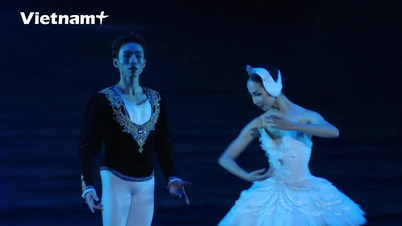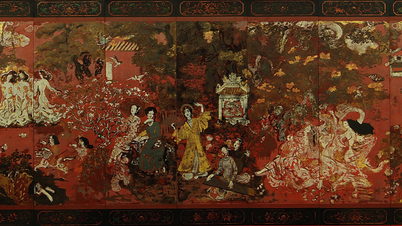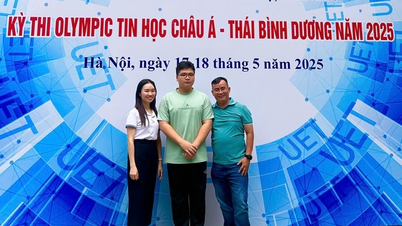South Korean officials said on April 27 that the country's National Election Commission (NEC) has introduced an artificial intelligence (AI) model to detect fake news developed by the National Forensic Service (NFS) to prevent the spread of fake deepfake videos during the early presidential election on June 3.
The AI model, named Aegis after the shield wielded by Zeus in Greek mythology, will be used by NEC to detect sophisticated AI-generated deepfake videos that are difficult to identify with the naked eye. Aegis was jointly developed by NFS and the Korea Electronics Technology Institute (KETI).
The NFS has been conducting research since April last year under a project organized by KETI and funded by the Institute for Information and Communications Technology Planning and Evaluation. The project is called "Self-evolving deepfake detection technology to prevent social side effects caused by AI."
Aegis was developed in the second year of the project with the participation of Korea National Police University, KAIST, Cleon (an AI face and voice creation company), and Wysiwyg Studios (a film production company). Aegis is optimized to detect the most difficult deepfake videos.
Under South Korea’s revised Civil Service Election Act, which will take effect in January 2024, it is illegal to produce or distribute AI-generated deepfake videos for campaign purposes. However, deepfake videos targeting leading presidential candidates have been rampant online, most of which are defamatory or libelous. For example, deepfake videos of Democratic Party (DP) candidate Lee Jae Myung wearing a prison uniform or People’s Power Party (PPP) candidate Han Dong Hoon removing his wig.
On April 9, NEC launched a task force on deepfake AI fraud, using a three-stage detection process. First, human monitors will visually examine videos. If a video is difficult to distinguish, an AI model like Aegis will be used to analyze it, and finally, AI experts will evaluate it.
“We mainly use NFS’s Aegis because of its high detection accuracy, but we also cross-verify it with other models,” said an NEC official.
Aegis is designed to detect output generated through diffusion, one of the newest methods for AI image generation. There are two main methods for AI image generation, generative adversarial networks (GANs) and diffusion models. GANs involve two competing neural networks to generate images quickly, but the resulting images are often distorted, making them easier to detect.
In contrast, recent image generators like Midjourney and OpenAI’s DALL-E use a diffusion approach (adding artificial noise to an image and then removing the noise to create a high-resolution, high-quality image). As a result, images generated using the diffusion approach are much harder to distinguish from real images using conventional detection techniques alone.
Aegis is improved to detect even deepfake videos created using diffusion methods.
“We are equipping Aegis not only to detect deepfakes and deepfakes, but also to analyze whether the content created is for malicious purposes,” said an NFS official./.
Source: https://www.vietnamplus.vn/han-quoc-su-dung-tri-tue-nhan-tao-phat-hien-video-gia-mao-ve-bau-cu-post1035586.vnp



![[Photo] Close-up of the project connecting 3 key highways in the South](https://vphoto.vietnam.vn/thumb/1200x675/vietnam/resource/IMAGE/2025/5/28/c4b0bc977e964bb79d08b4e836974495)
![[Photo] Welcoming ceremony for Hungarian President Sulyok Tamas and his wife on an official visit to Vietnam](https://vphoto.vietnam.vn/thumb/1200x675/vietnam/resource/IMAGE/2025/5/28/7956bacf4a3e4bde8326cb8f72a3b26c)
![[Photo] President Luong Cuong holds talks with Hungarian President Sulyok Tamás](https://vphoto.vietnam.vn/thumb/1200x675/vietnam/resource/IMAGE/2025/5/28/0f603676be6444aa9f52d4bd32582b4d)

![[Photo] Hungarian President and his wife take a walk and enjoy the view of Hoan Kiem Lake](https://vphoto.vietnam.vn/thumb/1200x675/vietnam/resource/IMAGE/2025/5/28/b9c83fbe6d5849a4805f986af8d33f39)


















![[Photo] Hungarian President begins official visit to Vietnam](https://vphoto.vietnam.vn/thumb/1200x675/vietnam/resource/IMAGE/2025/5/27/ab75a654c6934572a4f1a566ac63ce82)
























![[Case Study] VIMC – 30-year journey of overcoming waves and reaching far](https://vphoto.vietnam.vn/thumb/402x226/vietnam/resource/IMAGE/2025/5/28/ac45a93a62884eec85471e6c89ef521a)



































Comment (0)